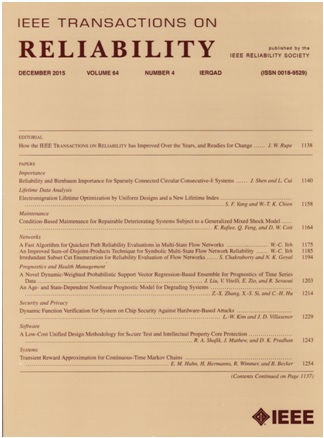Two-Dimensional Optimization Framework of Online Interpretable Time-Frequency Feature Learning for Practical Machine Health Monitoring
IF 5.7
2区 计算机科学
Q1 COMPUTER SCIENCE, HARDWARE & ARCHITECTURE
引用次数: 0
Abstract
Data-driven feature extraction for machine health monitoring has garnered significant attention, yet two key limitations remain unaddressed: lack of interpretability and the need for extensive historical fault data. To overcome these problems, an online two-dimensional optimization framework is proposed that enables interpretable time-frequency feature extraction and health index (HI) construction without requiring faulty samples for model training. Our approach introduces a convex hull-based closest point optimization model for estimating time-frequency instances and learning interpretable time-frequency features. By leveraging a small set of baseline vibration samples and recent online data, rapid fault diagnosis can be achieved based on optimized interpretable time-frequency features. This method also facilitates long-term degradation tracking by constructing and updating an HI from collected time-frequency spectrograms. Once machine faults appear, updated time-frequency features can show apparent and interpretable fault signatures for prompt fault alarming. Moreover, the proposed framework allows continuous HI updates for incipient fault detection and degradation tracking. The proposed framework is validated by using two run-to-failure datasets and ablation experiments are conducted to demonstrate its superiority.面向实际机器健康监测的在线可解释时频特征学习二维优化框架
用于机器健康监测的数据驱动特征提取已经引起了极大的关注,但两个关键限制仍未解决:缺乏可解释性和需要大量的历史故障数据。为了克服这些问题,提出了一种在线二维优化框架,该框架可以实现可解释的时频特征提取和健康指数(HI)构建,而不需要错误样本进行模型训练。我们的方法引入了一个基于凸壳的最近点优化模型,用于估计时频实例和学习可解释的时频特征。通过利用一小部分基线振动样本和最近的在线数据,可以基于优化的可解释时频特征实现快速故障诊断。该方法还通过从收集的时频谱图构建和更新HI来促进长期退化跟踪。一旦机器出现故障,更新的时频特征可以显示明显的和可解释的故障特征,以便及时报警。此外,所提出的框架允许持续的HI更新,用于早期故障检测和退化跟踪。利用两个运行到失效数据集对该框架进行了验证,并进行了烧蚀实验以证明其优越性。
本文章由计算机程序翻译,如有差异,请以英文原文为准。
求助全文
约1分钟内获得全文
求助全文
来源期刊

IEEE Transactions on Reliability
工程技术-工程:电子与电气
CiteScore
12.20
自引率
8.50%
发文量
153
审稿时长
7.5 months
期刊介绍:
IEEE Transactions on Reliability is a refereed journal for the reliability and allied disciplines including, but not limited to, maintainability, physics of failure, life testing, prognostics, design and manufacture for reliability, reliability for systems of systems, network availability, mission success, warranty, safety, and various measures of effectiveness. Topics eligible for publication range from hardware to software, from materials to systems, from consumer and industrial devices to manufacturing plants, from individual items to networks, from techniques for making things better to ways of predicting and measuring behavior in the field. As an engineering subject that supports new and existing technologies, we constantly expand into new areas of the assurance sciences.
 求助内容:
求助内容: 应助结果提醒方式:
应助结果提醒方式:


